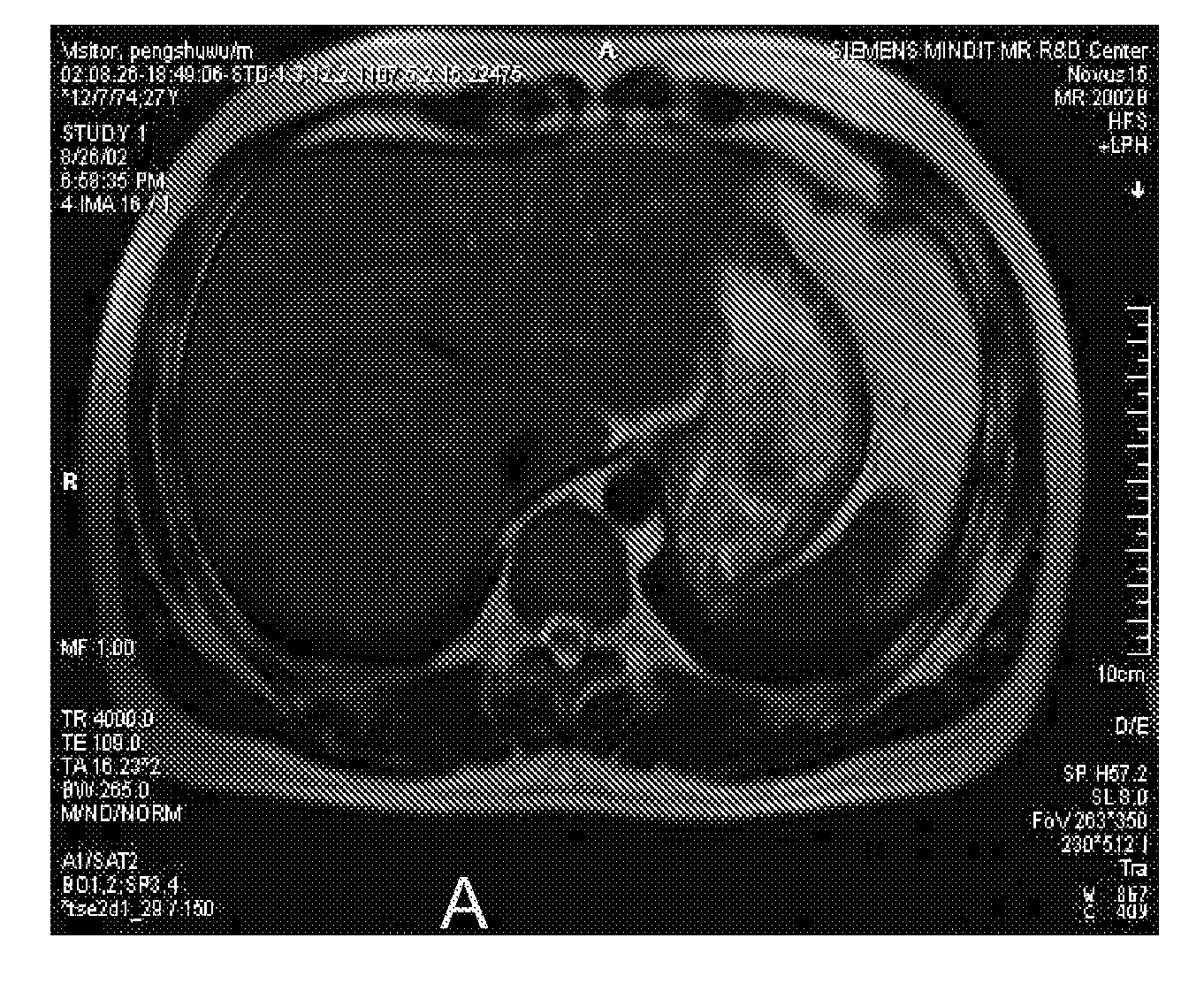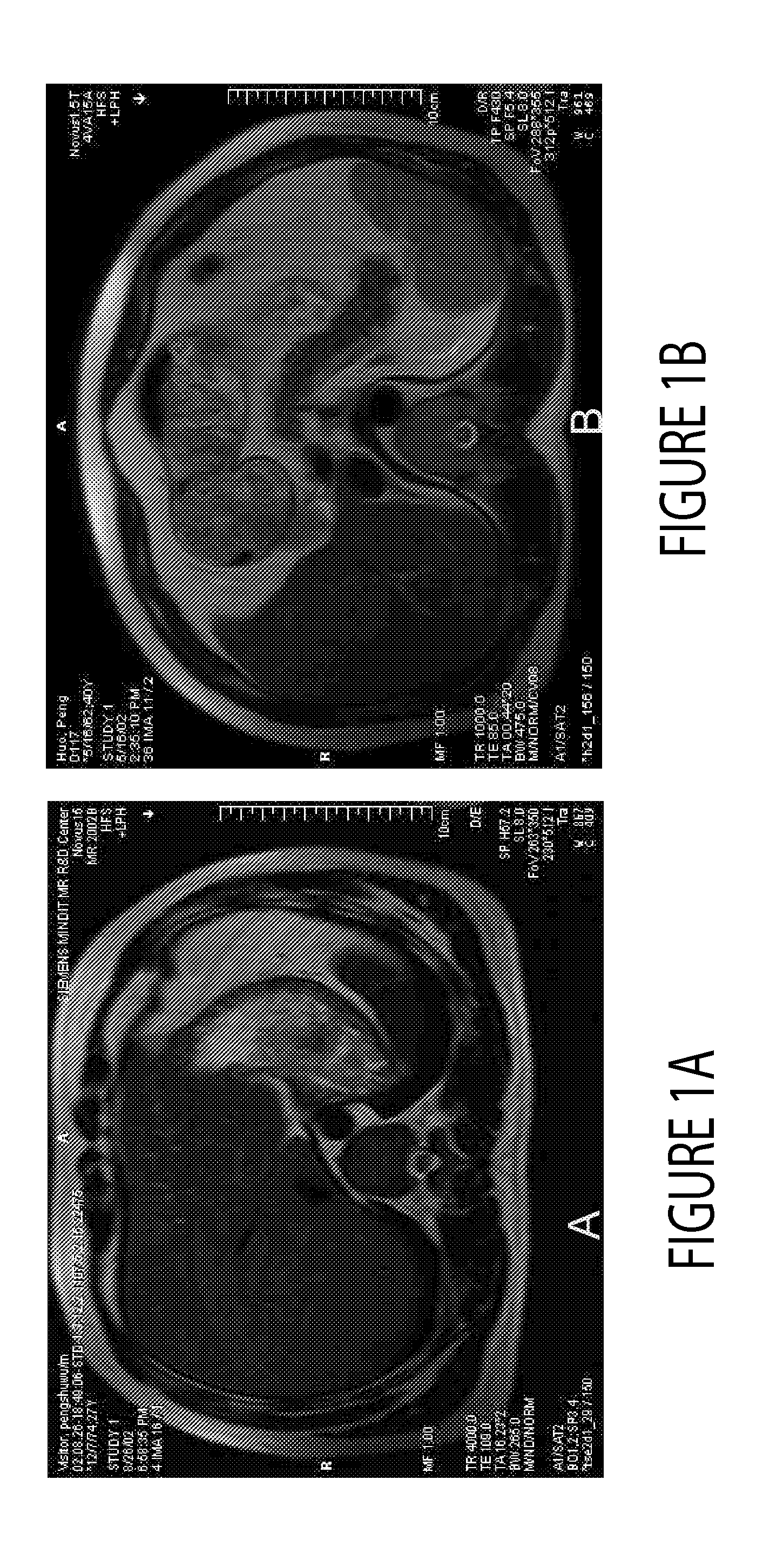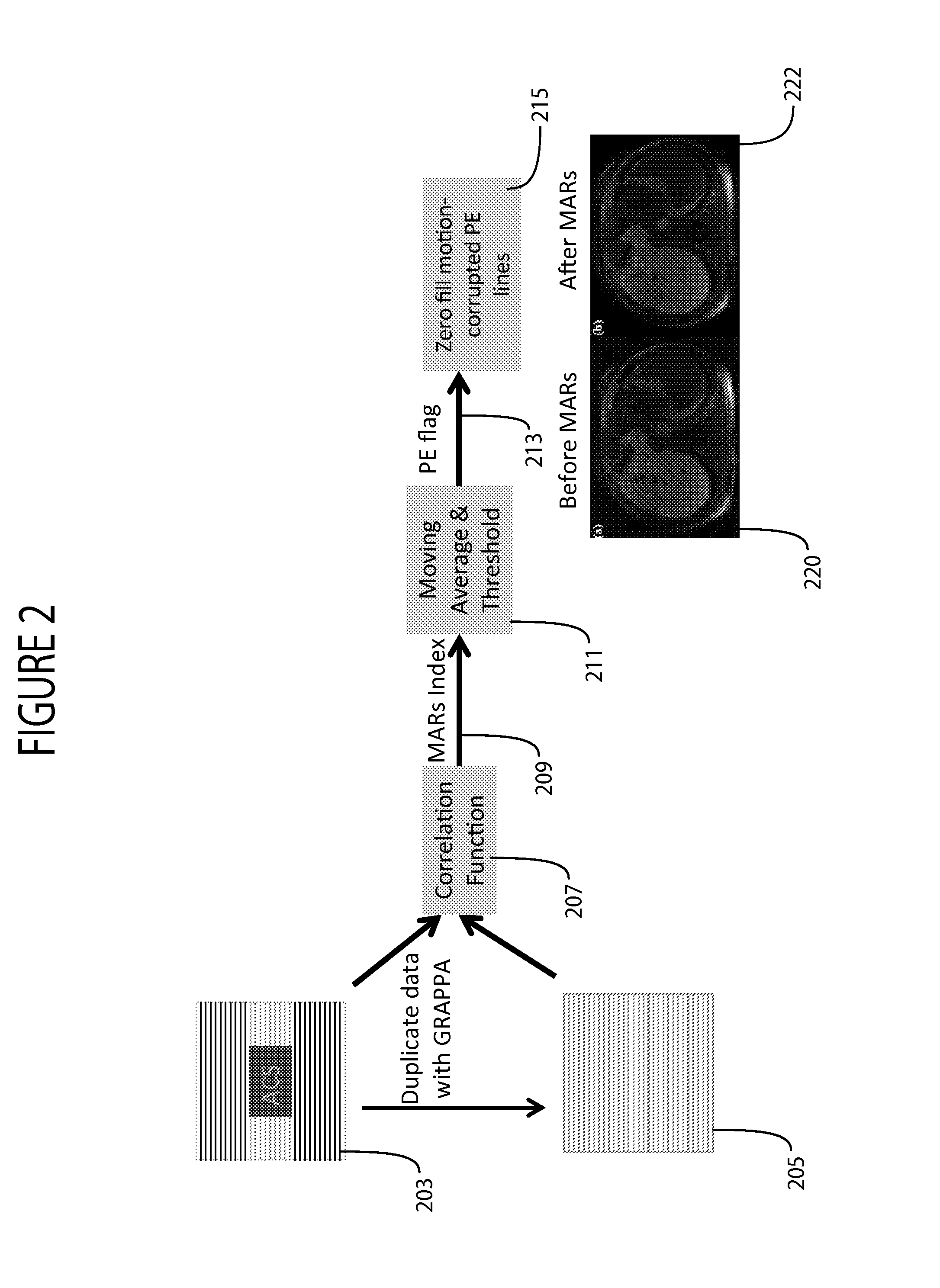Motion Compensated MR Imaging System
a motion correction and imaging system technology, applied in the field of motion correction mr image data, can solve the problems of respiratory related patient physical motion unavoidable during mr imaging, reduce image quality for clinical diagnosis, and inconvenient collection of mr data, so as to reduce respiratory related motion artifacts, reduce respiratory related motion, and reduce the effect of patient effor
- Summary
- Abstract
- Description
- Claims
- Application Information
AI Technical Summary
Benefits of technology
Problems solved by technology
Method used
Image
Examples
Embodiment Construction
[0015]A system addresses respiratory related motion artifacts in medical imaging by exploiting measured information while minimizing need for patient breathhold cooperation and without substantially increasing image processing time, in clinical abdominal MR applications, for example. In discarding motion contaminated image data, it is desired to keep as much relevant information as possible. Known systems discard relevant image information and use just part of the acquired image data in employing sub-optimal methods to reduce respiratory motion artifacts. For instance, known methods typically use a gating method without employing fast acquisition methods or during patient breathhold use a fast acquisition without using gating information and discard useful image information.
[0016]A system according to invention principles uses breathhold, center-out k-space encoding and advantageously selects and discards motion contaminated data in a postprocessing stage comprehensively based on av...
PUM
 Login to View More
Login to View More Abstract
Description
Claims
Application Information
 Login to View More
Login to View More - R&D
- Intellectual Property
- Life Sciences
- Materials
- Tech Scout
- Unparalleled Data Quality
- Higher Quality Content
- 60% Fewer Hallucinations
Browse by: Latest US Patents, China's latest patents, Technical Efficacy Thesaurus, Application Domain, Technology Topic, Popular Technical Reports.
© 2025 PatSnap. All rights reserved.Legal|Privacy policy|Modern Slavery Act Transparency Statement|Sitemap|About US| Contact US: help@patsnap.com



